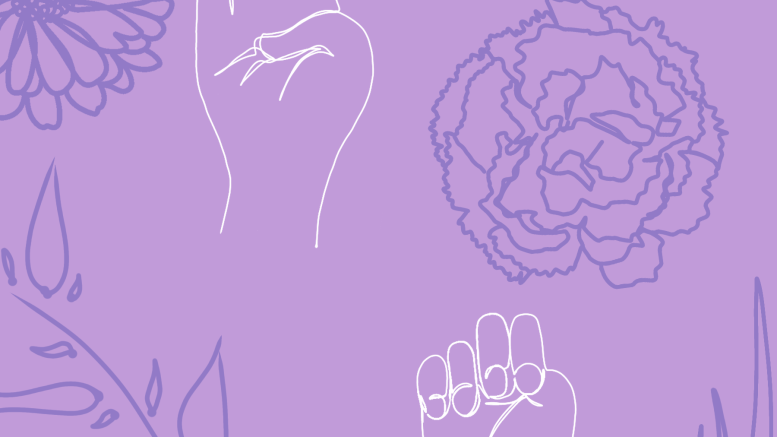More than one in four women experience intimate partner violence before the age of 50. A form of gender-based violence, intimate partner violence (IPV) refers to harm or abuse caused by a current or former intimate partner. In 2021, police reported over 100,000 survivors of IPV in Canada. As these incidents often go unreported, the true number could be far higher.
With police-reported incident rates steadily rising over the last seven years, combatting the “shadow pandemic” of IPV is more vital than ever.
U of M professor in the faculty of social work Kendra Nixon is a researcher and advocate for the cause.
As a student in high school, Nixon developed a passion for social issues, particularly those affecting women. She has been involved in women’s rights issues throughout her life, both as a volunteer with women-focused non-profit organizations and as a shelter worker.
Nixon’s foray into research began as a research assistant for RESOLVE—a tri-prairie research network focused on family and gender-based violence. Today, she is the director of the organization.
“The reality is that women are targets of violence,” she said. “Intimate partner violence is a serious social concern.”
Having worked in the field for nearly 30 years, Nixon noted that though many improvements have been made, there is still much to be done to address IPV.
Rather than adopting one-size-fits-all approaches to preventing and alleviating IPV, Nixon emphasized the complexity of the issue. Educating others on this complexity is important, she noted, as people experience IPV in many ways.
“When I have speaking engagements, when I lecture in classes, when I work with community members, that’s one thing I try to do,” said Nixon. “I try to explain how complex [intimate partner violence] is, and how our understanding of it is continually evolving.”
Though IPV occurs across all demographics, some groups are more affected than others. Women living in rural areas face disproportionately high rates of IPV.
Nixon was the principal investigator of Responding to Women Who Experience Intimate Partner Violence in Rural Municipalities Across the Prairies, a research project tackling this issue. The project interviewed rural women across the provinces of Alberta, Saskatchewan and Manitoba about their experiences with IPV.
The study found that not only do women in rural areas experience one of the highest rates of IPV in Canada, but a lack of resources, isolation and several other barriers make it difficult for them to seek help. IPV often involves physical, emotional, financial or sexual abuse, and may involve children.
Among other recommendations, the report suggested improving access to services, transportation, health care and police-dispatch to ensure long-term support to IPV survivors. Assistance in navigating the justice system and more diversity among police, welfare officers and shelter staff were also recommended.
Nixon highlighted the importance of protecting IPV survivors by investing in intervention, prevention and increasing funding to programs. Non-profit organizations that work directly with survivors and perpetrators of violence remain underfunded.
“Intimate partner violence continues to persist,” said Nixon. “We need to be constantly taking it seriously. We need to be constantly investing in it.”
Co-author on the report and research associate at RESOLVE, Masha Kardashevskaya, focuses her work on the impacts of gender-based violence in Indigenous communities. She explores the intersection of culture, customs and gender-based violence.
“When you do research on gender-based violence in the context of Canada, there’s always going to be that component of either Indigenous women or immigrant women,” Kardashevskaya said.
“That deals with the question of culture and cultural safety, and cultural understanding of the dynamics of violence, as well as of solutions to violence.”
Her current research focuses on increasing cultural safety for Indigenous women in non-Indigenous shelters. The experiences of Indigenous survivors accessing shelters are often very different. Forty-four per cent of Indigenous women have experienced physical or sexual assault by an intimate partner, almost double the rate of non-Indigenous women.
Kardashevskaya noted the significant negative effect of IPV on those who experience it. There are direct impacts on those experiencing violence, as well as indirect,
intergenerational impacts experienced by children who grow up in homes where IPV occurs. Violence “trickles down,” she said.
“If we’re able to stop violence at this level of generation that we’re working with currently, then it’s possible that we can minimize violence in future generations too.”
Understanding and practising healthy relationships is crucial to ending IPV.
This includes learning to negotiate differences and resolve power dynamics in healthy ways. Healthy relationships involve open communication, honesty and respect. Setting boundaries and practising consent are also key.
Kardashevskaya underscored the importance of taking action in one’s personal life by being educated on avoiding and addressing different forms of violence. This, she said, is crucial to being “not a bystander, but an advocate.”


